
At 9:20 am on 15 February 2013, the people of the industrial town Chelyabinsk in Russia were starting their mornings when a light streaked across the sky. Bright enough to outshine the Sun, people ran to windows to see the trail it left in the sky. A few minutes later, a boom swept through the town, shattering windows, bringing down walls, and knocking people to the ground.
That shocking sound was a meteor exploding overhead, but it wasn't just the noise. Fragments of rock were blasted across the landscape by the blast, falling down on the snow like rain.
Videos from dashcams and CCTV cameras soon appeared on news channels around the world, sending meteorite hunters and researchers flocking to the town. Among those who arrived after the airblast was a young Ph.D. student just getting started in her journalistic career - me.
I'd been asked to present a documentary about the event with the rather dramatic title of Meteor Strike! Fireball from Space, which was how a film crew and I found ourselves knee-deep in snow during the Russian winter, three weeks following the explosion. However, it was the very snow-freezing my toes that made Chelyabinsk the perfect place for a meteorite hunt. When the rocks fell onto untouched snow, the heat they picked up from their journey through the atmosphere melted a clear, obvious hole. Find a hole, dig to the bottom and there's a good chance you'll find a meteorite.
The area had been picked over by the time we arrived, but our director did manage to find a 1cm wide pebble. It was pure black, covered in a fusion crust created by the heat of entry melting the surface. There's something magical about holding a freshly found meteorite in your hand. This was a fragment left over from the birth of the Solar System.
It had been in space for billions of years until just a few weeks ago. And by this point, there was even a pretty good idea of where it had been.
هذه القصة مأخوذة من طبعة February 2023 من BBC Sky at Night Magazine.
ابدأ النسخة التجريبية المجانية من Magzter GOLD لمدة 7 أيام للوصول إلى آلاف القصص المتميزة المنسقة وأكثر من 9,000 مجلة وصحيفة.
بالفعل مشترك ? تسجيل الدخول
هذه القصة مأخوذة من طبعة February 2023 من BBC Sky at Night Magazine.
ابدأ النسخة التجريبية المجانية من Magzter GOLD لمدة 7 أيام للوصول إلى آلاف القصص المتميزة المنسقة وأكثر من 9,000 مجلة وصحيفة.
بالفعل مشترك? تسجيل الدخول
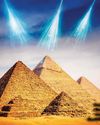
Putting cosmic rays to work
These penetrating interstellar particles have applications from astronomy to archaeology
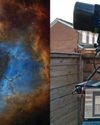
Set up your first imaging sequence
How to automate and coordinate your gear over multiple nights of imaging

The Universe without gravity
Life with no gravity might sound a fun idea, but as Govert Schilling explains, shutting off this pivotalforce would spell disaster for Earth and beyond
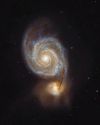
How to blend images taken with different camera setups
Combine data captured at varied focal lengths to create rich, deep images

INSIDE THE SKY AT NIGHT
Back in September 2021, The Sky at Night show spoke to Carly Howett about NASA's then upcoming Lucy mission. As the spacecraft now approaches its main targets - the Trojan asteroids - we check in with her to see how the mission is going

The science of SCI-FI
We love a good sci-fi film, but do they get the science right? Amy Arthur picks six of the big mistakes made in space films

Seeing in a new light
It's National Astronomy Week this month, so take a tip from Mark Westmoquette and let mindful stargazing change your perspective on your life and problems
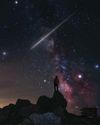
What to do if you find a meteorite
Ever come across an unusual rock and wondered if it's a meteorite? Mark McIntyre explains how to tell if that stone really is a fragment from outer space
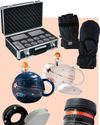
GEAR
Charlotte Daniels rounds up the latest astronomical accessories

Q&A WITH A STELLAR ECLIPSE SPECIALIST
Many stars are gravitationally locked inside multi-star systems, but a rare new triple-star system has set a new record for how cosy these clusters can get
